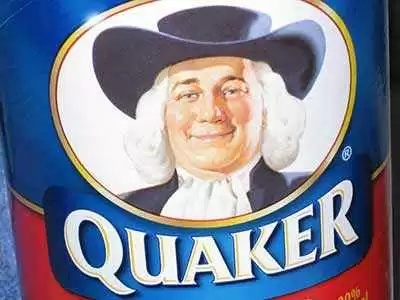
Celiac.com 11/22/2018 - Figuring out the best way to make sure that oats are gluten-free is an interesting and important piece of the gluten-free manufacturing puzzle. That’s partly because getting representative test samples for antibody-based testing is challenging when analyzing whole grains for gluten. Moreover, when whole grains are ground into flour for testing, confocal microscopy studies have shown that gluten tends to exist as aggregates within the starch background, making single-sample testing inaccurate and complicating the ability to arrive at an accurate average from multiple samples.
In addition, whole-grain products are riskier for gluten-free consumers, because contamination is localized to specific servings, rather than being distributed throughout the product. This makes parts-per-million values less relevant for whole-grain products. Intact grains, seeds, beans, pulses, and legumes offer an alternative opportunity for gluten detection, in that contaminating gluten-containing grains (GCGs) are visible and identifiable to the trained eye or properly calibrated optical sorting equipment.
Celiac.com Sponsor (A12):
A team of researchers recently set out to assess the use of visual inspection for assessing levels of gluten-containing grains in gluten-free whole oats, grains, seeds, beans, and legumes, and to determine a Gluten Free Certification Organization threshold level for the maximum number of GCGs within a kilogram of non-gluten grains sold as specially processed gluten free product.
Researchers LK Allred, C Kupper, and C Quinn are affiliated with the Gluten Intolerance Group of North America, 31214 124th Ave SE, Auburn, WA 98092. In their study, they ran 180 samples containing one or two wheat, rye, or barley grains through an optical sorter at the Grain Millers, Inc. facility 30 times each. In every base, the sorter diverted the GCGs into the smaller stream of rejected material. The calculated probability of detection, or in this case probability of rejection from the oat sample for all three grain types, was 1.00, with a 95% confidence interval of 0.96–1.00.”
Their study showed that a gluten grain threshold of 0.25 GCG/kg can be achieved for oats, and is, likely achievable in other cereals, beans, pulses, legumes, and seeds with naturally lower levels of GCGs. Their conclusions rest in part on data quality, and the assumption of a low false-negative rate.
Their conclusions were supported by optical sorting verification done by Grain Millers, Inc., and by Discovery Seed Laboratories and Kent Agri Laboratory Ltd, which are CFIA-accredited seed testing facilities.
One way to ensure that gluten levels in gluten-free flour remains below 20 ppm might be to visually examine intact grains, seeds, beans, pulses, and legumes; this process is called “hand sorting.” GCGs are generally visible and identifiable to the trained eye or properly calibrated optical sorting equipment. This potentially offers exciting possibilities for creating a system to physically spot-check batches of gluten-free oats.
Basically, gluten levels below 20ppm are achievable by both hand and optical sorting. However, a properly calibrated optical sorter is much faster, and much more accurate than hand sorting. Also, as the report states, “even with well-trained personnel, hand picking for grading has shown accuracy in the range of 86–90%, and we have assumed a 14% non-detection rate with the proposed sampling plan presented.”
A non-detection rate of 14% could lead to gluten levels as high as 140,000 ppm, compared with optical sorting alone. General Mills claims their optical sorting equipment achieves under 20 ppm.
For companies that have access to optical sorting equipment, such as General Mills, employee performance can also be checked by running the batch of material they have accepted through the sorter to determine whether any GCGs have been missed. Employees who do not accurately detect the GCGs in these samples must be retrained and monitored to ensure accuracy.
Properly calibrated optical sorting looks to be the best way to sort gluten-containing grains from large quantities of oats and other materials. Any human role in such an undertaking would largely be relegated to spot-checking and re-scanning sub-samples to confirm overall results.
This study authors rather diplomatically note that their study does not serve as a validation for either the Purity Protocol or the mechanical sorting method of producing gluten-free grains, “but rather demonstrates that achieving the proposed threshold is possible under both systems.”
However, the fact is that even Purity Protocol oats will have to be inspected at some point, using either optical sorting, human sorting, or a combination of both. The reality is that inspecting oats for GCGs using humans alone is both time-consuming and fraught with error. That potentially means increased production costs. In the end, a combination of optical sorting systems and humans checking each other might be the way to go.
For now, studies like this one will help us narrow down the best practices and help to ensure that we take the best path toward the manufacture of gluten-free oats.
Read more at the JOURNAL OF AOAC INTERNATIONAL VOL. 101, NO. 1, 2018



.webp.51e03bcf7946741107fc361e03fd8001.webp)



Recommended Comments
There are no comments to display.
Create an account or sign in to comment
You need to be a member in order to leave a comment
Create an account
Sign up for a new account in our community. It's easy!
Register a new accountSign in
Already have an account? Sign in here.
Sign In Now